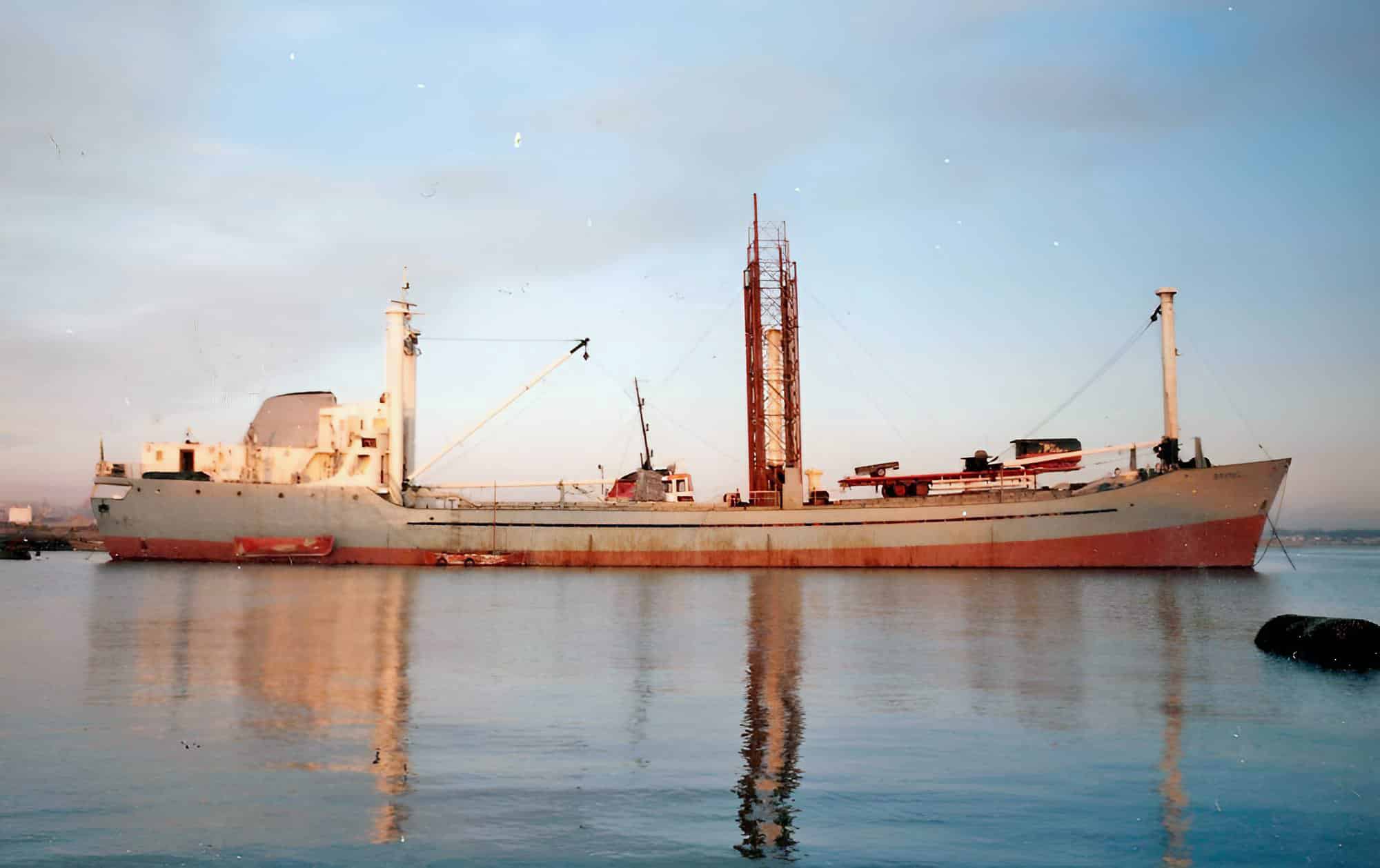Ship details: The MV Monte Cuatro was built in 1956 at the S.A. Juliana Const. Gijonesa shipyard. The ship’s length was 244 feet 4 inches (74.71 metres) and a width of 35 feet (10.75 metres) built in such a way that it could be converted at any time from a 550 BR Tonnes freighter with an open deck into one with closed top deck of 1165 BR tonnes. Motor: 1230 PK. The s call sign was H2NN, and listed by Lloyds of London under number 6416718. The MV Monte Cuatro was renamed MV Monte Balerdi in 1982. Later the was renamed the Dionissios K, and sailed under the Cypriot flag. Then the ship was purchased by Harvey Metals. In 1984 the vessel was towed from Scotland to Southampton via Portsmouth. While in Southampton the ship was overhauled, the first since the ship was built. The ship was renamed the MV Nannell and registered in Puerto Cortez, Honduras. The name Nannell was chosen in honour of a senior lady in the owners family – Nellie, who was known to her many grandchildren as Nan Nell. Harvey Metals sold the MV Nannell to Worldwide Broadcasting Corporation during a voyage from Southampton to Spain. Amongst those people who were temporarily involved in the Nannell project were Paul Rusling, Nico Volker and Ex-Veronica technicians José van Groningen and Hans van Velsen.
In February 1986 the MV Nannell sailed from Southampton to her home port of Santander via Gijon. The vessel was taken to the Alantico shipyard to be converted into a radio ship. The British Government put pressure on Spain to prevent further conversion work taking place. Spain demanded that the work should stop and insisted that, since the MV Nannell was a Honduran ship it should also have a Honduran licence for radio broadcasts. In March the MV Nannell left the Atlantico shipyard stating her destination as Oran, Algeria, however the ship had stayed without completing advice from professionals that the 240 feet mast be fully stayed. Within a few miles of the coast it hit huge ‘Bay of Biscay’ rollers, the ship pitched, rolled one way – and the mast went another and was forever lost beneath the waves. Lesson number 2 of offshore radio – get the mast properly stayed! Instead of Algeria, the ship sailed for France. At the end of April new backers had been found and the MV Nannell sailed back to Santender under a different flag with all the correct paperwork. More financial problems slowed the project down.
By June 1989 the MV Nannell was anchored off the Belgian coast, but some months later, it headed for Portsmouth harbour. In 1990 the owners of the ship decided to scrap the ship, which had now been renamed Mia Migo in the meantime. In September the Mia Migo was scrapped In Zeebrügge (Belgium).
Planned offshore radio station: Stereo Hits 531 (or Stereo Hits 576) and WSOL 801. According to Walter Zwart (Simons) there were also talks with Delta Radio from Nijmegen/Netherlands and with the American based Music Of Your Life.
Herbert Visser reported that in the summer of 1989, a single FM-test was transmitted from the MV Nannell off the Belgian coast.
Planned location: International waters of the North Sea

